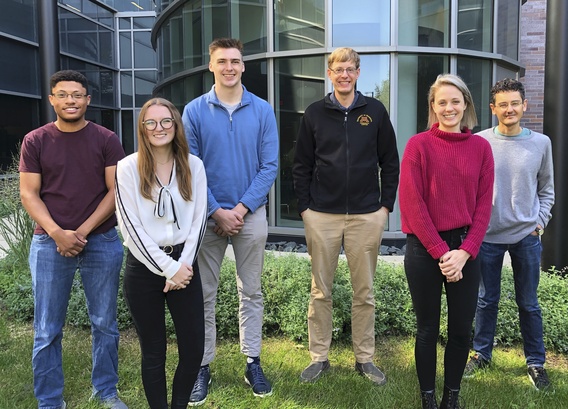Innovation Lab tackling zebra mussels, COVID, and more

The Innovation Lab at the University of Minnesota Genomics Center (UMGC) is a research group within the UMGC that focuses on the development of novel genomics research tools. Under the leadership of Dr. Daryl Gohl, the Innovation Lab has established an externally-funded research program, obtaining independent and collaborative grants from the NIH, CDC, and other agencies.
“I see the Innovation Lab as a catalyst for the development and application of cutting-edge genomics methods at the University of Minnesota,” said Kenny Beckman, Director of the UMGC. “The Innovation Lab’s impact goes beyond the UMGC through the many collaborations they have established with University of Minnesota researchers and other groups, such as their work with the Minnesota Department of Health on COVID sequencing.”
The Innovation Lab is pursuing a wide variety of projects including collaborative research aimed at linking single-cell transcriptomic data to spatial or physiological information within a tissue using different strategies for in vivo or in situ cell barcoding. In addition, the Innovation Lab continues work on developing synthetic standards to improve next-generation-sequencing based measurements. Expanding on previous studies, their recent paper in Nucleic Acids Research uses synthetic standards to demonstrate that primer editing can rescue the dropout of taxa in marker gene-based microbiome profiling assays.
Another Innovation lab project is a collaboration with the invasive species researcher Dr. Michael McCartney and with Dr. Scott Ballantyne at the University of Wisconsin River Falls which builds on previous work sequencing the zebra mussel genome and is attempting to develop tools for knocking down the expression of critical genes in zebra mussels. “As a geneticist, it is an exciting challenge to try to genetically manipulate an organism where this has never been done before,” says Dr. Gohl. This project will develop methods to deliver RNA-Interference constructs to zebra mussels targeting genes involved in shell formation, the generation of attachment fibers, and other conserved cell biological functions. This summer, the team has been working in the MAISRC containment lab to develop phenotypic assays that will allow them to analyze the effects of the RNAi constructs on zebra mussels.
Based on Dr. Gohl’s experience using Drosophila as a model organism, the Innovation Lab currently has multiple projects that make use of fruit flies, which have become a frequent sight in the CCRB lab. One ongoing project is a collaboration with the Biosensing and Biorobotics Laboratory in the Department of Mechanical Engineering, led by Dr. Suhasa Kodandaramaiah, building a system for automated microinjection of Drosophila embryos. Innovation lab scientists are hoping that eliminating microinjection as a bottleneck will enable novel types of genome-scale experiments, as well as new approaches to the persistent problem of Drosophila cryopreservation.
The Innovation Lab has also contributed to the UMGC’s COVID-19 response. In particular, Dr. Gohl is the PI for funding from the Centers for Disease Control and Prevention’s SPHERES program (SARS-CoV-2 Sequencing for Public Health and Emergency Response, Epidemiology, and Surveillance). Early in the pandemic Innovation Lab scientists leveraged their NGS methods development experience to develop a rapid and low-cost tailed amplicon method for sequencing the SARS-CoV-2 genome, which is being used in the UMGC and elsewhere. UMGC scientists have sequenced more than 11,500 SARS-CoV-2 genomes to date from Minnesota and at least five other states. “It’s been very gratifying to contribute to the massive viral genomic surveillance effort,” says Dr. Gohl. “We are seeing the emergence of a whole new way of tracking and understanding disease at the global scale powered by genomics.”